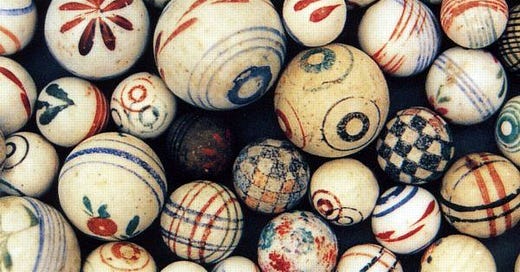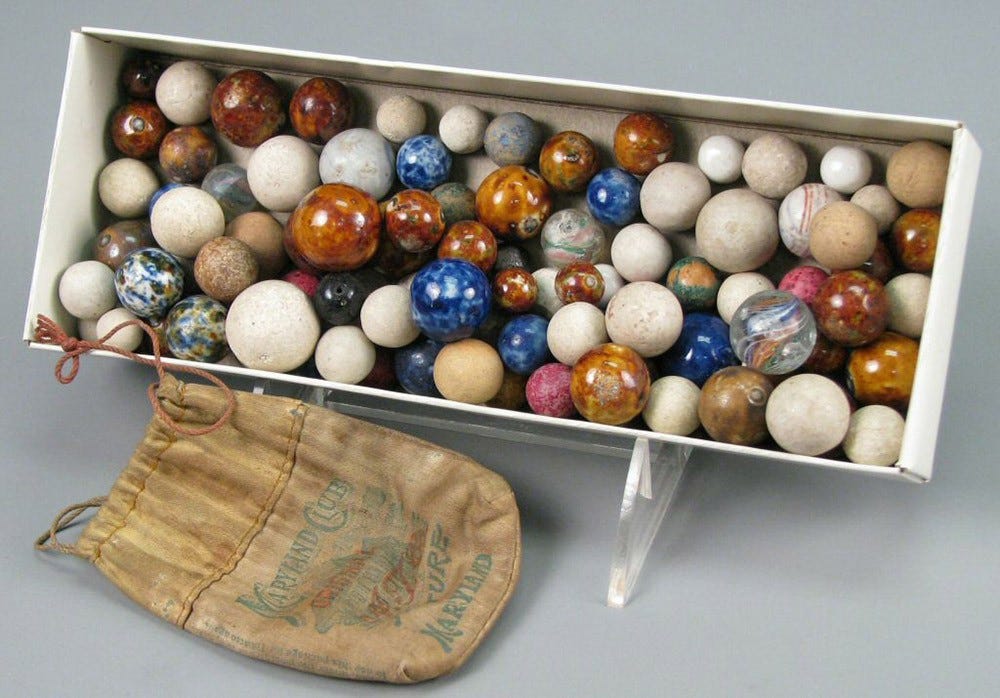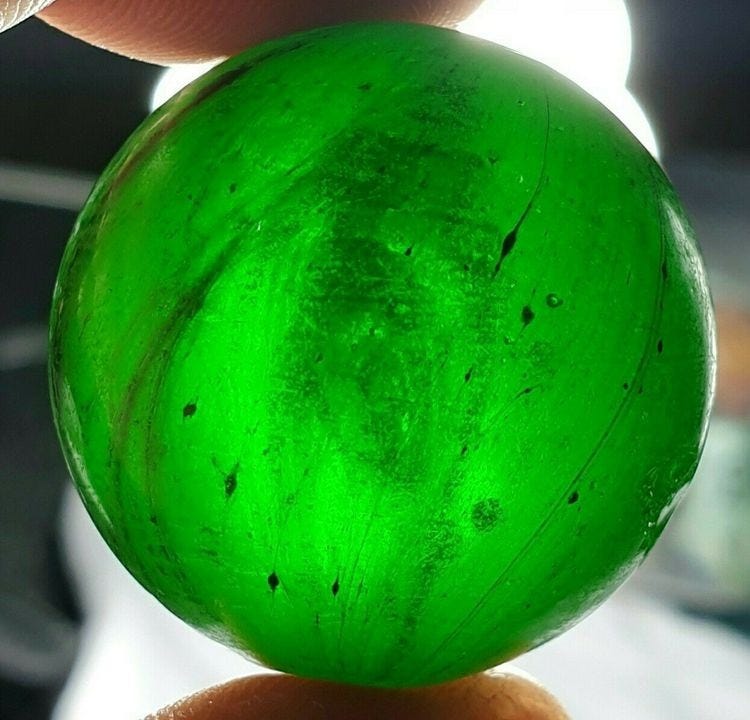In Praise of Marbles
Tiny spheres that glassmakers produced for their children became items of trade that spread around the world.
The first glass marbles, those that are so common today with the swirls of color, were first crafted in Germany during the middle portion of the nineteenth century, most likely towards the end of the 1840s. It is estimated that glass blowers made over 30 million marbles in German during this period, and through trade they scattered to the ends of the earth. Their evolution was heavily influenced by trade with Asia, where the Chinese made marbles for centuries from clay and stone.
Glass marbles became a worldwide craze with the advent of specialized machinery, specifically scissors that had one blade that looked much like a spoon, allowing glass blowers to be cut and shape molten glass into balls with relative ease. Early glass marbles, prior to industrialization, were often made from leftover glass scraps shaped by skilled glassblowers. Many of these marbles are highly valued today. With the advent of specialized machinery, marbles were mass produced on a scale unimaginable only decades before. By 1880 the marble craze had washed ashore in the United States, making the U.S. the world’s largest marble market, and their popularity would easily rival the video games of later generations.
Round spheres made of clay, stone, metals, ivory, porcelain, wood, and glass have been recovered from archeological sites around the globe. The word marble is derived from the ancient Greek word “marmaros” which means “shining stone”. Obviously, this word is a nod to the stone we all know so well with its shiny metallic flakes. This material was undoubtedly fashioned into rounds spheres and the “marble” was born.
One of the earliest forms of marbles were small stones or pebbles that children would roll at targets during the Stone Age. It is also known that ancient Greek, Roman, and Jewish children play games with round nuts that later evolved into clay marbles in Asia, the southwestern and northern plains of the United States, Northern Mexico, Egypt, and many other places. You could say that marbles were one of the world’s first global phenomena. Children everywhere have long found ways to play with marbles.
For example, excavations performed at the St. Amelia plantation house in Louisiana recovered 15 marbles of different sizes and colors found in the yard behind the main plantation home. This gives archeologists and social scientists a vivid insight into the lives of the people living there. St. Amelia Plantation was privately-owned and active from 1848 all the way to 1959. That means that the house was full throughout the entire range of the Golden Age of Marbles, or the era when they were at their most popular here in the United States — the 1920s and 30s. Whether they were produced in the 1840s or the 1940s, they demonstrate that St. Amelia played host to people who had both the time and the money for entertainment, which tells us how successful the plantation was. After all, the families who owned the land must have had a profitable operation if they were able to afford toys for their children!
By 1921, Sears Roebuck and Company were advertising the sale of German-made marbles in its catalog. After the destruction of Germany during WWII the production of marbles became largely an American concern. Companies such as J.H. Leighton’s Iowa City Glass Company and Martin F. Christensen’s Christensen and Sons would dominate glass marble production for the next several decades. Christensen eventually took the lead in production when he converted a steel ball bearing machine into a glass making marble apparatus capable of manufacturing over 1 million marbles a month.
It is because of Christensen’s success that the American Toy Marble Museum is located in downtown Akron, Ohio.







I remember them well. Inspiring stuff.